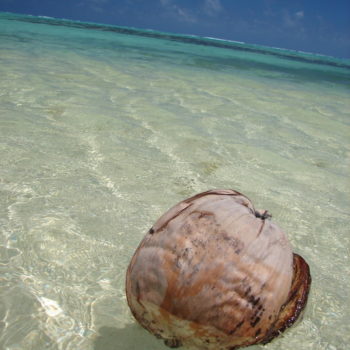The seed in a plant is the part that develops from the ovules after fertilization. They are enclosed in the fruit which develops from the fertilized ovary. The seeds are formed as a result of sexual reproduction and contain the young embryo which can develop into a new plant. Let’s learn more.
Suggested Videos
Structure of a Seed
Seeds of different plants may vary in many ways, but the basic anatomy remains the same. A typical seed consists of the following parts:

Source: Google
- Tesla: It is the outer coat of the seed that protects the embryonic plant.
- Micropyle: It is a tiny pore in the testa that lies on the opposite of the tip of the radicle. It permits water to enter the embryo before active germination.
- Hilum: Is a scar left by the stalk which attached the ovule to the ovary wall before it became a seed.
- Cotyledon: In some plants, this contains high quantities of starch and will provide a source of food for the developing embryo prior to germination, in other plants this role is performed by an endosperm. In monocotyledons, there is just one cotyledon whereas in dicotyledons there are two. Depending on the type of germination (epigeous or hypogeous) the cotyledons may remain below ground or be pulled above ground.
- Radicle: This is the embryonic root which will develop into the primary root of the plant. It is usually the first part of the embryo to push its way out of the seed during germination.
- Plumule: This is the embryonic shoot. It appears as a bud which will give rise to the shoot and the remaining structures in the plant.
- Endosperm: In many plants, a separate part for storage of starch develops and this is called the endosperm. It is seen in maize and wheat.
Learn more about Stem Structure here in detail.
Functions of Seeds
The seeds perform the following functions:
- They help in germination of the new plant.
- The seeds contain food reservoirs in the form of cotyledons and endosperm.
- The seed coat is protective in nature which protects the embryo inside.
Dispersion of Seeds
Dispersion is defined as the scattering or transport of seeds from one place to another by means of a dispersing agent. It can occur by four modes:
- Wind
- Water
- Animals
- Explosion
Dispersion by Wind
The seeds that are dispersed by wind are generally light and small such that they can be easily carried away by the wind. Example: cotton seeds

Source: Google(Tes.com)
Dispersion by Animals
These seeds have external structures such as spines or hooks such that they can attach themselves to animals and get dispersed to other places. These seeds are generally attractive and so are their fruits. Example: Guava seeds, dates.
Dispersion by Water
These seeds have a structure, generally, hollow such that they can easily float on water. Once they reach a place where the conditions are suitable, they germinate. Example: Mangroves.

Source: Google
Dispersion due to Explosion/Expulsion
Some plants fling or throw their seeds out once the fruit has ripened. This explosion occurs as a result of evaporation of water from the pods. Once the pods dry out, they expel the seeds which are then carried by wind or gravity to other places where they germinate. Example: Viola

Source: Pinterest
Solved Example for You
Q: Which of the following parts does the seed develop from?
(a) Ovary (b) Embryo
(c) Embryo sac (d) Ovule
Sol. (d) Ovule
Once fertilization occurs, the ovary starts maturing and eventually develops into the fruit and the ovules contained in them become the seeds.







Use the
competitive examination
The apps is very helpful, but in the registration there is no Nigeria phone code?
seems like a good app,but,there countries missing,there is no ZAMBIA There,alot of african countrys not there for registraction,…what do we do for like us to register whose country is not there